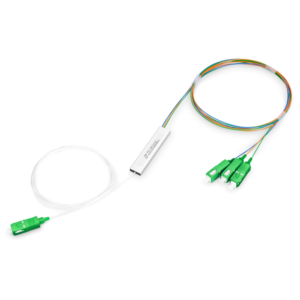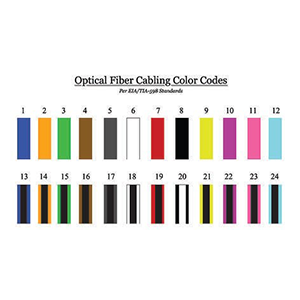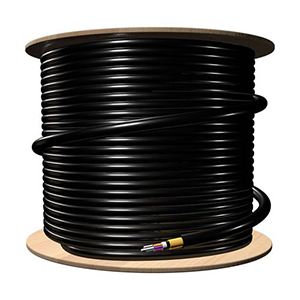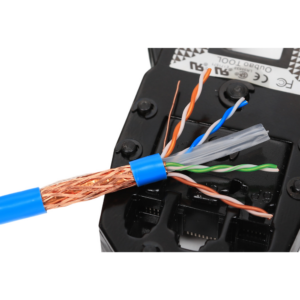Welcome to read this article. I will introduce you to the basic concepts, working principles and application advantages of WDM optical fiber (Wavelength Division Multiplexing Fiber) in optical fiber communications. WDM optical fiber is an optical fiber communication solution that uses wavelength separation technology to achieve multi-channel transmission.
In this article, we will explain the definition and basic principles of WDM fiber to help you understand how it uses different wavelengths to transmit multiple signals simultaneously. At the same time, we will also explore the role and advantages of WDM technology in optical fiber communications, such as increasing transmission capacity and reducing costs.
Introduction to WDM optical fiber
Definition and rationale:
WDM optical fiber (Wavelength Division Multiplexing Fiber) is an optical fiber communication technology that uses optical signals of different wavelengths to transmit data simultaneously in the same optical fiber. It is based on the wavelength characteristics of light and achieves multiplexing by combining optical signals of different wavelengths for transmission.
WDM technology:
WDM technology plays an important role in optical fiber communications and has the following functions and advantages:
-
Multiplexing: WDM technology uses different wavelengths to transmit multiple optical signals simultaneously in one optical fiber. This effectively splits the fiber’s bandwidth into multiple independent channels, each of which can carry independent data streams. Through multiplexing, WDM can significantly improve the transmission capacity and utilization of optical fibers.
-
High-capacity transmission: Because WDM technology can multiplex and transmit multiple independent optical signals, it can greatly increase the transmission capacity of optical fibers. By transmitting multiple channels simultaneously, WDM can achieve high-speed, high-capacity data transmission to meet the growing communication needs.
-
Flexibility and scalability: WDM systems can support different numbers of wavelength channels and have great flexibility and scalability. The number of wavelength channels can be increased or decreased as needed to accommodate different network requirements. This provides the network with better scalability and room for future growth.
-
High-speed transmission: WDM technology can support high-speed data transmission, including common rates in optical fiber communications, such as 10 Gbps, 40 Gbps, 100 Gbps or even higher rates. By properly designing and adjusting the spacing between wavelength channels, high-speed transmission and low bit error rate performance can be achieved.
-
Fiber resource sharing: WDM technology allows different optical signals to be transmitted in the same optical fiber, thereby realizing the sharing of fiber resources. This reduces fiber usage, lowers the cost of fiber optic networks, and provides more efficient resource utilization.
WDM optical fiber technology provides high-capacity, high-speed and flexible optical fiber communication solutions by multiplexing optical signals of different wavelengths. It is widely used in modern optical fiber communication networks and provides important support for efficient and reliable data transmission.
Types and characteristics of WDM optical fiber
Single mode fiber:
In WDM fiber, the commonly used fiber type is single-mode fiber (Single-Mode Fiber, SMF). Single-mode fiber has a small core diameter and a high refractive index difference, so that optical signals can only propagate along the main mode and can support longer transmission distances. The following are the characteristics of single-mode fiber:
-
Small core diameter: The core diameter of single-mode fiber is usually 9/125μm (9 micron/125 micron). Compared with multi-mode fiber, the core diameter is smaller, which can reduce multi-mode dispersion and inter-mode crosstalk.
-
High bandwidth: Since only the main mode can propagate, single-mode fiber has a higher bandwidth and supports high-speed data transmission and long-distance communication.
-
Long transmission distance: Since the propagation mode of single-mode optical fiber is the main mode, there is almost no inter-mode dispersion during optical signal transmission, so long transmission distances can be achieved.
Wavelength division multiplexing and dense wavelength division multiplexing:
WDM optical fiber realizes multi-channel transmission through wavelength division multiplexing (Wavelength Division Multiplexing) and dense wavelength division multiplexing (Dense Wavelength Division Multiplexing, DWDM) technologies. These technologies use optical signals of different wavelengths to be transmitted in optical fibers and demultiplexed at the receiving end. The following are the characteristics of wavelength division multiplexing and dense wavelength division multiplexing:
-
Wavelength division multiplexing (WDM): Wavelength division multiplexing technology combines optical signals of different wavelengths for transmission in one optical fiber, and each wavelength corresponds to an independent channel. Demultiplexing is performed through gratings or filters to separate optical signals of different wavelengths. Wavelength division multiplexing technology is suitable for a smaller number of channels, usually in the range of a few to dozens of wavelengths.
-
Dense wavelength division multiplexing (DWDM): Dense wavelength division multiplexing technology is a further development of wavelength division multiplexing, which achieves a higher number of channel transmissions in optical fibers. DWDM technology uses tighter wavelength spacing, typically in the range of several GHz, allowing more wavelength channels to be transmitted simultaneously in a single fiber. This enables higher transmission capacity and greater bandwidth utilization.
-
Multi-channel transmission: Wavelength division multiplexing and dense wavelength division multiplexing technologies realize multi-channel transmission, allowing multiple independent signals to be transmitted in the same optical fiber. This can significantly increase the transmission capacity of optical fiber and improve the bandwidth and performance of the network.
The commonly used fiber type in WDM fiber is single-mode fiber (SMF), which has the characteristics of small core diameter, high bandwidth and long transmission distance. Through wavelength division multiplexing and dense wavelength division multiplexing technology, WDM optical fiber realizes multi-channel transmission and provides high-capacity, high-speed and flexible optical fiber communication solutions. These technologies are widely used in modern optical fiber communication networks to meet the growing communication needs.
Application fields of WDM optical fiber
Optical Fiber Communication:
WDM optical fiber has a wide range of applications in the field of optical fiber communications, including long-distance transmission and high-capacity networks. The following are its main applications:
-
Long-distance transmission: WDM optical fiber technology can achieve high-capacity long-distance transmission by multiplexing optical signals of different wavelengths. It is widely used in optical fiber transmission systems across continents and oceans to meet the needs of long-distance communications.
-
Optical fiber backbone network: WDM optical fiber plays an important role in the optical fiber backbone network. By multiplexing and transmitting optical signals of multiple wavelengths, WDM technology has greatly improved the transmission capacity and rate of optical fiber backbone networks. This is critical to support large-scale data transfers and the growth of Internet traffic.
-
High-capacity network: WDM optical fiber technology enables the optical fiber network to transmit multiple independent channels at the same time to achieve high-capacity data transmission. It is widely used to build high-capacity optical fiber networks to meet modern communication needs, such as cloud computing, high-definition video, virtual reality and other applications.
data center:
WDM optical fiber also has important applications in data centers to achieve high-bandwidth and low-latency data transmission. The following are its main applications:
-
Data center interconnection: Data centers typically require high-bandwidth and low-latency interconnection networks. WDM optical fiber technology can provide multi-channel transmission and effectively meet the transmission needs of large amounts of data between data centers. It can support high-rate data transmission to meet the requirements of data center applications such as cloud computing, big data processing, and distributed storage.
-
Fiber Channel multiplexing: Communication between servers and storage devices in the data center requires a large number of Fiber Channels. WDM optical fiber technology can realize the multiplexing of optical fiber channels and transmit multiple independent optical signals through different wavelengths, reducing the use of optical fibers and improving resource utilization efficiency.
-
Data center cloud-optical network: As the scale of data centers increases and data traffic increases, data center cloud-optical networks (Data Center Interconnect, DCI) become increasingly important. WDM optical fiber technology can realize high-speed, high-capacity connections between data centers through multiplexing technology, support the sharing and interconnection of data center resources, and provide flexible data center interconnection solutions.
WDM optical fiber is widely used in the field of optical fiber communications for long-distance transmission and high-capacity networks. At the same time, it also has important applications in data centers to achieve high-bandwidth and low-latency data transmission to meet the growing needs of data centers.
Optical fiber transmission technology of WDM optical fiber
DWDM and CWDM:
DWDM (Dense Wavelength Division Multiplexing) and CWDM (Coarse Wavelength Division Multiplexing) are commonly used dense wavelength division multiplexing technologies used to implement multi-channel optical fiber transmission. They differ in wavelength spacing and application scenarios.
DWDM (Dense Wavelength Division Multiplexing):
- Features: DWDM technology uses tighter wavelength spacing, usually in the range of several GHz, so that more wavelength channels can be transmitted simultaneously in one optical fiber. It supports a large number of channels, reaching tens or even hundreds of wavelengths, achieving extremely high transmission capacity and bandwidth utilization.
- Application scenarios: DWDM is mainly used in long-distance optical fiber transmission systems and optical fiber backbone networks to meet the needs of high-capacity and long-distance transmission. It is widely used for fiber optic communications across continents and oceans, supporting large-scale data transmission and the growth of Internet traffic.
CWDM (Coarse Wavelength Division Multiplexing):
- Features: CWDM technology uses looser wavelength intervals, usually in the range of tens of nanometers. Compared with DWDM, there are fewer wavelength channels. It has lower cost and more simplified optical components and is suitable for shorter distance and lower capacity transmission.
- Application scenarios: CWDM is mainly used for shorter distance optical fiber transmission, such as metropolitan area networks, enterprise networks and data centers. It can meet the needs of small and medium-sized networks, providing moderate transmission capacity, while featuring low equipment cost and easy deployment.
Fiber Couplers and Splitters:
Fiber couplers and splitters are commonly used components in WDM optical fibers and are used to achieve multi-channel optical fiber transmission.
-
Fiber optic coupler: Fiber optic coupler is used to combine the signals of multiple optical fibers into one optical fiber, or to separate the signals of one optical fiber into multiple optical fibers. It couples or decouples optical signals of different wavelengths through the principles of light refraction and reflection. Fiber optic couplers are often used at the transmitting end and receiving end of optical fiber communication systems to achieve signal multiplexing and distribution.
-
Optical splitter: Optical splitter is used to split the signal of one optical fiber into multiple signals, or to combine multiple signals into one signal. It can selectively distribute optical signals according to wavelength, so that optical signals of different wavelengths can be transmitted in the same optical fiber. Optical splitters are often used in the demultiplexing process in WDM systems to separate or combine optical signals of different wavelengths.
These optical fiber transmission technologies and components together constitute the key elements of the WDM optical fiber system, which can realize multi-channel optical fiber transmission and provide high-capacity, high-speed and flexible communication solutions.
Performance parameters and limitations of WDM fiber
Signal attenuation and dispersion:
In WDM fiber, signal attenuation and dispersion are the two main performance parameters and limitations.
-
Signal attenuation: Signal attenuation refers to the power loss of optical signals during optical fiber transmission. The material and structure of the optical fiber will cause attenuation of the optical signal, resulting in a weakening of the signal strength. The main causes of attenuation include absorption attenuation, scattering attenuation and bending attenuation. Signal attenuation will limit the distance and transmission capacity of optical fiber transmission, so appropriate signal amplification and attenuation compensation measures are required to overcome the effects of attenuation.
-
Chromatic dispersion: Chromatic dispersion refers to the time delay difference caused by the different propagation speeds of optical components of different wavelengths in optical fibers. Dispersion in optical fibers can cause optical signals to expand or interfere with each other, limiting transmission bandwidth and transmission rate. The main types of dispersion include dispersion wavelength (or scale) and dispersion mode (or time width). For WDM optical fiber systems, the control and compensation of dispersion are crucial to ensure the correct demultiplexing and transmission of signals with different wavelengths.
Crosstalk between channels:
Inter-channel crosstalk refers to the phenomenon of mutual interference between signals of different wavelengths in WDM optical fiber. Inter-channel crosstalk can lead to reduced signal quality and increased bit error rates, thereby limiting the performance of fiber optic transmission.
Inter-channel crosstalk mainly includes two types:
-
Optical crosstalk: crosstalk caused by the interaction of optical signals in optical fibers. The main optical crosstalk mechanisms include nonlinear effects, waveguide coupling, and scattering. Optical crosstalk can cause signal waveform distortion and phase changes, thereby affecting signal demodulation and demultiplexing.
-
Electronic crosstalk: Crosstalk caused by electronic interference generated during the demodulation and processing of optical signals. In fiber optic systems, optical signals need to be processed by electronic devices such as photoelectric conversion and electro-optical conversion. Electronic crosstalk may come from the nonlinear characteristics of the photoelectric conversion device, noise during the photoelectric conversion process, etc. Electronic crosstalk affects the amplitude and phase of signals, resulting in increased bit error rates.
To reduce crosstalk between channels, the following methods can be adopted:
- Optimize the design of optical fibers and optical devices to reduce the occurrence of optical crosstalk.
- Use appropriate modulation formats and demodulation techniques to reduce the effects of electronic crosstalk.
- Use fiber optical amplifiers (EDFA or Raman amplifiers) to enhance the intensity of optical signals and reduce the impact of crosstalk.
- Use appropriate signal modulation and demodulation algorithms to improve signal fault tolerance.
Signal attenuation, dispersion and channel-to-channel crosstalk are the main performance parameters and limitations in WDM fiber optic systems. Through appropriate design and optimization measures, their impact can be reduced and the performance and reliability of optical fiber transmission can be improved.
Future development trend of WDM optical fiber
High capacity transmission:
WDM optical fiber has the following development trends and technological innovations in achieving higher capacity transmission:
-
Multi-level WDM (M-WDM): Multi-level WDM technology extends the existing single-level WDM system to multiple levels, achieving higher transmission capacity by further increasing the number of wavelength channels and closer wavelength spacing. This includes the use of higher modulation rates, higher wavelength density and wider spectral bandwidth and other technical means.
-
Spatial division multiplexing (SDM): Spatial division multiplexing is an emerging technology that achieves higher transmission capacity by transmitting multiple spatial modes or multiple cores simultaneously in optical fibers. This can be achieved through technologies such as multicore fiber, multimode fiber, or spatial division multiplexers.
-
Bending-insensitive optical fiber: Traditional optical fiber will cause attenuation and dispersion of optical signals when bent, which limits the layout and installation of optical fiber networks. The future development trend is to develop bend-insensitive optical fibers that can maintain low transmission loss and dispersion even under large-angle bends, and provide a more flexible and convenient network layout.
Fiber optic network expansion:
WDM optical fiber has the following emerging applications and development directions in expanding fiber optic network coverage and connectivity:
-
Nonlinear optical fiber: Nonlinear optical fiber is a kind of optical fiber with special materials and structures, which can produce nonlinear effects in the optical fiber, such as supercontinuum spectrum generation, optical clock Extraction and wavelength conversion, etc. Nonlinear optical fibers can expand the coverage and connectivity of optical fiber networks, providing more flexible and efficient optical fiber transmission solutions.
-
Optical fiber passive network (PON): The optical fiber passive network is an optical fiber access network based on WDM technology, which can realize the transmission of multiple users sharing one optical fiber. The future development trend is to apply PON technology to larger-scale networks, such as metropolitan area networks and wide area networks, to provide high-speed optical fiber access and broadband transmission services.
-
Optical fiber interconnection network: A fiber optic interconnection network is a network that uses optical fiber to connect devices such as servers, data centers, and supercomputers. With the rapid development of data centers and cloud computing, the demand for fiber optic interconnection networks is also increasing. The future development trend is to combine WDM technology with high-speed photoelectric conversion technology to achieve faster and higher-capacity optical fiber interconnection networks.
The future development trend of WDM optical fiber in terms of high-capacity transmission and optical fiber network expansion is to continuously promote technological innovation, increase transmission rate, increase the number of wavelength channels and improve network coverage. This will further promote the development of optical fiber communications and meet the growing needs for data transmission and application scenarios.
Summarize:
By reading this article, you will have a deeper understanding of the definition, working principle and application advantages of WDM optical fiber in optical fiber communications. As a multi-channel transmission solution, WDM optical fiber provides high-capacity and high-efficiency solutions for optical fiber communications. Understanding the different types and characteristics of WDM optical fiber, as well as its application in optical fiber communications and data centers, will help you make full use of its advantages and achieve more powerful data transmission capabilities.





